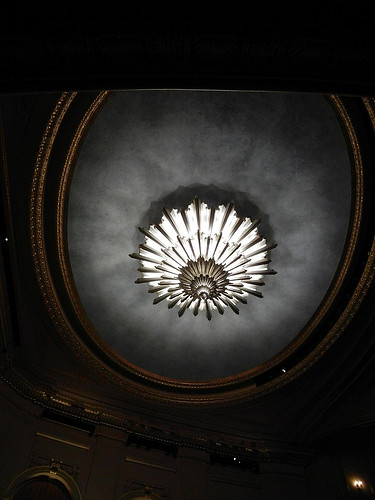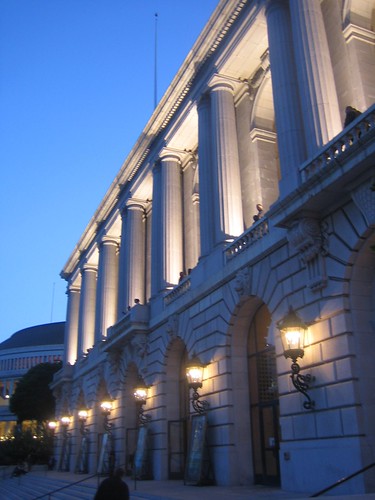The classical-music business lives in perpetual fear of the future. The last great shiver of foreboding swept over the city at the end of the nineteen-sixties, when it appeared that the new generation—the boomers—had no interest in classical music. The classical industry made a strong recovery, but the economic collapse of 2008 diminished both attendance and donations, and as a result several institutions are teetering or failing outright. What’s new about the current crisis is its sharply political edge, mirroring bigger battles that are taking place across the country. Managements and governing boards have often adopted an anti-union tone, charging that the costs of employing up to a hundred musicians year-round have become insupportable. That classical music could still draw a crowd was made clear in March, when YouTube Symphony drew an electronic public of thirty-three million people. Two orchestras that nearly went bankrupt in 2001—the St. Louis Symphony and the Toronto Symphony—are now thriving. The problem cases tend to show multiple symptoms of poor management: dubious real-estate moves, ham-fisted labor relations, klutzy P.R., and, above all, a lack of artistic focus. The classical business needs to start thinking of itself not as luxury but as an essential part of the average thinking person’s life.
It went on to discuss recent productions by the financially troubled City Opera and gave a brief review of Wagner's "Die Walküre" at the Met, which cost enormous amount of money but brought little to the drama.
Last week, San Francisco Chronicle reported that San Francisco Opera's (SFO) general director, David Gockley
just renewed his contract for another five-year term as general director of the San Francisco Opera, but he's not taking any victory laps. Instead, he's using the occasion to sound an unusually urgent alarm about the company's financial future.Yes, indeed. He needs to worry, despite the fact that SFO is still a strong and vibrant institution. As a long time opera goer, and a cultural life observer, I would like to voice some thoughts of mine on how to improve the situation.
"I look at this company as teetering," he said during a recent interview in his office at the War Memorial Opera House. "The annual expenses are about $7 million more than we can reliably fund, and half of our annual gifts are made by just 11 individuals who are over 65 years old.
"That is sleep-depriving."
Among the perils besetting the company, Gockley says, are a $136 million endowment only half as large as it needs to be; dauntingly high fixed costs, particularly for health care; a punishingly compact performance schedule in a technologically antiquated facility; and a geographically scattered patchwork of office space, rehearsal venues and storage facilities.
Candid essays
Gockley began raising these issues last fall, in a startlingly candid series of essays that appeared in the company's program book. In those "Notes From the General Director," he described the Opera as standing at an economic "precipice."
The basic problem, as Gockley and Chief Financial Officer Michael Simpson lay it out, is stark enough. The company's annual budget runs to roughly $70 million, covered by ticket sales of $24 million (assuming ticket sales of 90 percent of capacity, which is as high as planners can rely on), contributions of $33 million, and a $6 million draw on the proceeds from the company's endowment. That leaves what Gockley calls "a $7 million hickey" that is not being covered up in any structural way.
Gockley is intent on building the endowment - and particularly on relieving the company's reliance on a small number of aging donors.
"People say not to worry about the graying of donors, because there are people in their 40s who are graying and they'll replace the grays," he said. "To a certain extent I embrace that idea, that people become more consistently wedded to attending an art form like symphony or opera when they get older.
"But it's hard to see the new generation of grays becoming our big contributors, given what I know of what the 40- and 50-year-olds are doing with their money. What we need to do is for each wealthy donor, to find 10 people who are interested in opera and get them to give one-tenth of what their parents gave."
- Building relationships with business world and business schools. Like it or not, money does concentrate in that sector and engage them is crucial for maintaining and enlarging the donor base. I have worked in world-renown company and university they tend to give tickets to baseball games for their business partners and employees, but not art institutions. Try it. Give tickets to business schools and large companies. SFO has wonderful theater and beautiful box seats can be very satisfying.
- SFO has done much to reach out, such as opera in the baseball park. However, it does not translate into bring them into opera house. What SFO can do is giving out door prizes and winners would be invited to experience opera in the theater.
- SFO cannot compete with the MET in cinemas. What SFO can do is recording their performances and made DVDs to order and sell them to the audience after the performances. People love souvenirs.
- Using social media to engage. San Francisco Ballet has made some efforts worth trying - such as giving out free tickets to Facebook fans.
- Engage young people - giving more CD/DVD/mp3/mp4 to school libraries.
- If Gockley's plan of enlarging office space takes place, make room for a year-round art gallery, feature theater-related art, or art work done by musicians, and exhibit scenery, costume, wig designs, production histories, etc. When the theater is dark, maintain a light on SFO somewhere else.
- SFO tried to reach out to Chinese audience by producing opera based on Amy Tan's book. Unfortunately the drama and music were sub-par. Chinese audience come to "Turandot" or Japanese audience come to "Madama Butterfly", not because these stories took place in China or Japan, but because of engaging drama and beautiful music. Don't shortchange them. If SFO is to try, Pulitzer winnder "Madame White Snake" by Zhou Long might be a good start.
- It's important to reach out to Chinese and other ethnic groups, because the tourists from China will grow fast. Try to connect with Chinese tour groups - bring them to the house, let them see some recorded performances during the theater tour and sell them DVDs.
- Do some more edgy and acclaimed works, such as "Handmaid's Tale", "Tempest", "Minotaur", etc. Some people do like the intellectualism of European conviction. They don't need to be Euro-trash.
- Find a small space for Baroque or chamber works. Hiring resident artists to sing parallel productions in the smaller space in English, or comparable works, such as Busoni's "Turandot" when the main stage present Puccini's.
- Better PR campaign. For example, during Ring cycle period, SFO can show the amazing movie "Die Nibelungen" by Fritz Lang in the opera house, and invite people would might not come for the 16-hour saga.







No comments:
Post a Comment